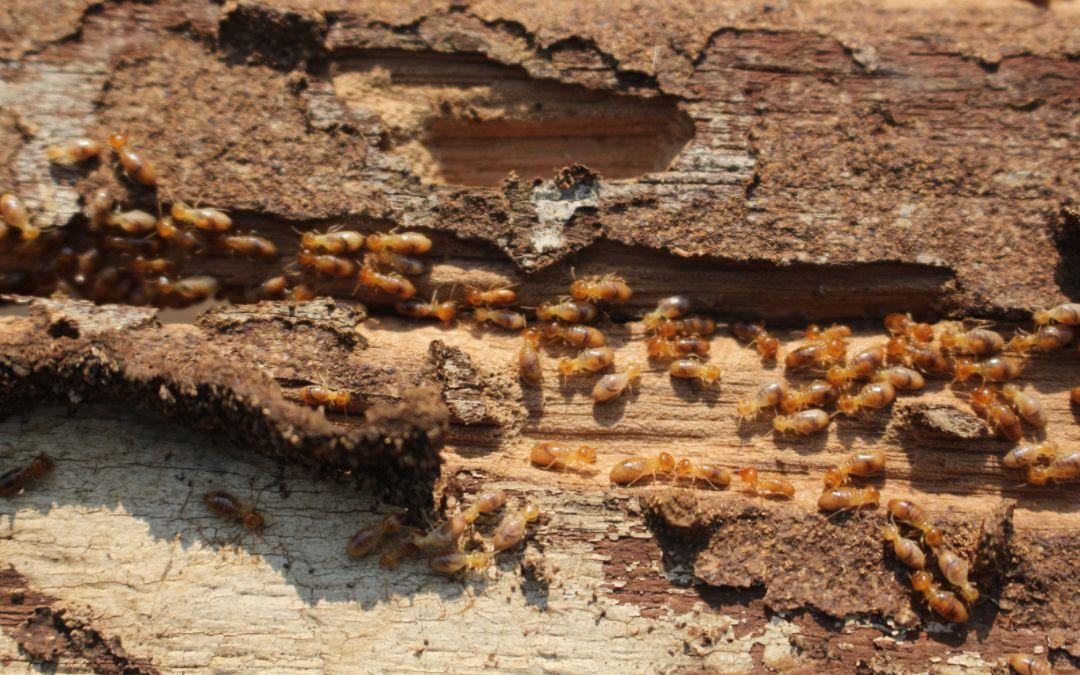Wood termites are among the most destructive pests that can invade your home—especially if you live in a warm, humid climate like Florida. These tiny insects can silently chew through your wooden structures, often going undetected for years until severe damage has already been done.
In this post, we’ll break down everything you need to know about wood termites, how they operate, where they hide, and the signs you need to watch out for. Whether you're dealing with a current infestation or trying to prevent one, this guide is for you.
Why Do Termites Eat Wood?
Termites don’t just randomly chew on wood—they rely on it to survive. Specifically, wood termites feed on cellulose, an organic fiber found in wood and other plant materials. This substance provides the energy termites need to grow their colonies.
What many homeowners don’t realize is that termites don’t eat all parts of the wood. Instead, they selectively consume the interior cellulose, leaving a thin outer shell intact. This makes infestations difficult to detect until the damage becomes severe.
How Termites Destroy Wooden Structures
As wood termites tunnel through wooden beams, furniture, or flooring, they create hollowed-out sections that weaken the material. Over time, this leads to sagging, crumbling, or even structural failure in extreme cases. These tunnels are also used to transport eggs and create new colonies.
Key takeaway: Termites don't just eat wood—they destroy it from the inside out.
Common Areas Wood Termites Attack in Your Home
If you're wondering which parts of your home are most at risk, here are the most common targets:
1. Structural Framing
The wooden framework of your home—especially in crawl spaces, basements, and attics—is highly vulnerable. Wood termites can compromise the integrity of load-bearing walls and beams.
2. Flooring and Baseboards
Termites love floorboards, particularly those made of hardwood or laminate. Buckling or soft spots may indicate internal termite damage.
3. Wooden Furniture
Cabinets, bookshelves, tables, and antique wooden furniture are all fair game for termites. Look for small holes or bubbling veneer as signs of infestation.
4. Outdoor Wood Features
Decks, fences, sheds, and pergolas made from untreated wood are prime feeding grounds for termites eating wood outdoors.
Telltale Signs of Termite Activity
Despite being tiny, wood termites leave behind several clues. Recognizing these early can save you thousands in repair costs.
Mud Tubes
Subterranean termites build pencil-sized mud tubes to travel between their colony and food sources. These tubes are usually found along walls, foundations, or crawl spaces.
Pro tip: Break off part of the tube and monitor it for a few days. If it gets rebuilt, the termites are still active.
Hollowed Wood
Tap on wood in suspected areas. If it sounds hollow, there’s a good chance termites have already moved in.
Discarded Wings
Termite swarmers (the reproductive members of the colony) shed their wings once they find a mate and a place to establish a new nest. These wings are often found near windows, doors, or light fixtures.
Termite Droppings
Drywood termites produce small, pellet-like droppings that resemble sawdust. You may find piles of these near baseboards or under furniture.
Blistering or Buckling Floors
Subterranean termites can cause floors to buckle or blister. Discolored wood or wavy textures are other common indicators of hidden termite activity.
Termites vs. Ants: How to Tell the Difference
It’s easy to mistake winged termites for flying ants, but knowing the difference can help you act quickly.
-
Waist: Termites have a straight body, while ants have a narrow, pinched waist.
-
Antennae: Termite antennae are straight; ant antennae are bent like elbows.
-
Wings: Termites have two pairs of wings of equal size; ants have one larger pair and one smaller.
If you spot flying insects shortly after rainfall, it's likely swarmers trying to start a new colony. Don’t ignore them—they are the warning sign of an active or growing infestation.
What to Do If You Suspect Wood Termites
Seeing signs of wood termites doesn’t automatically confirm an active infestation, but it’s a serious red flag. The next step is to schedule a professional termite inspection.
Certified termite inspectors know exactly where to look—even in hard-to-reach areas like attics and crawlspaces. They can identify the type of termite, the extent of the damage, and whether the colony is still active.
Don’t Wait—Act Fast
Delaying treatment can turn a manageable issue into a costly repair nightmare. A qualified pest control service will recommend effective treatment options tailored to your home and the severity of the infestation.
Final Thoughts: Protect Your Home from Wood Termites
Wood termites are a silent threat, but that doesn’t mean you have to be caught off guard. Understanding their habits, knowing where to look, and acting fast when signs appear are key to preventing serious damage.
If you're located in South Florida and suspect termite activity in your home, Guardian Angel Inspections is here to help. Our expert termite inspections will provide clarity—and peace of mind.
Contact us today at [561-512-7854] or fill out our online form to schedule your inspection.



